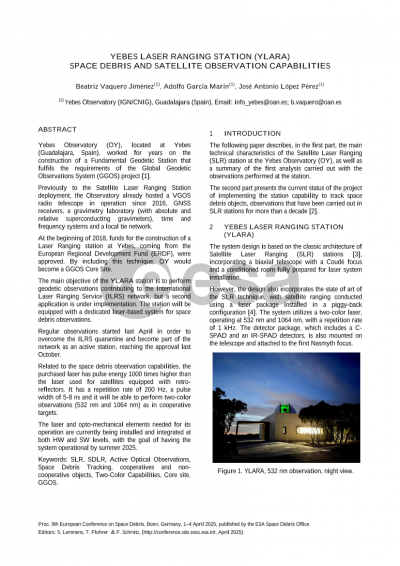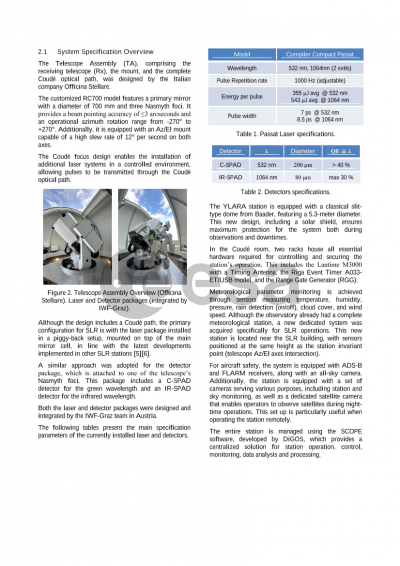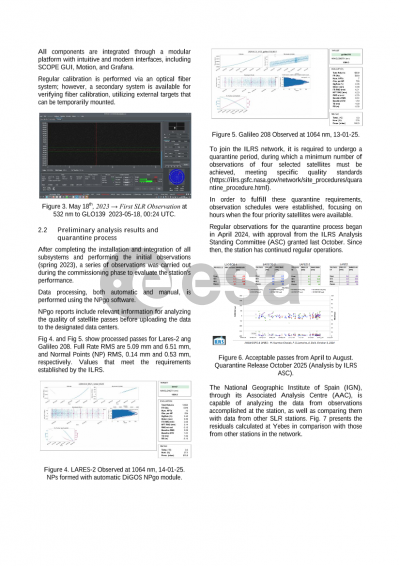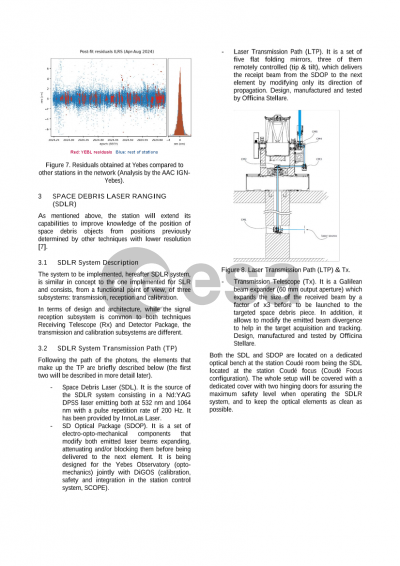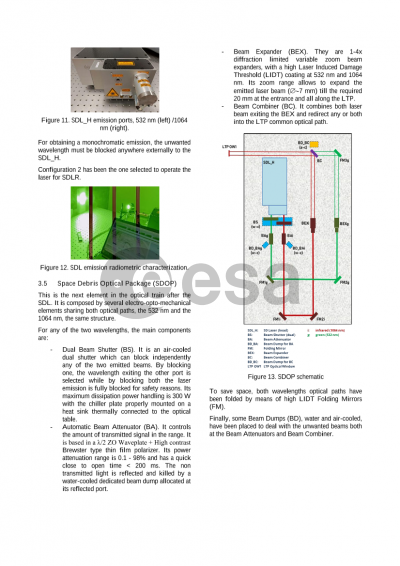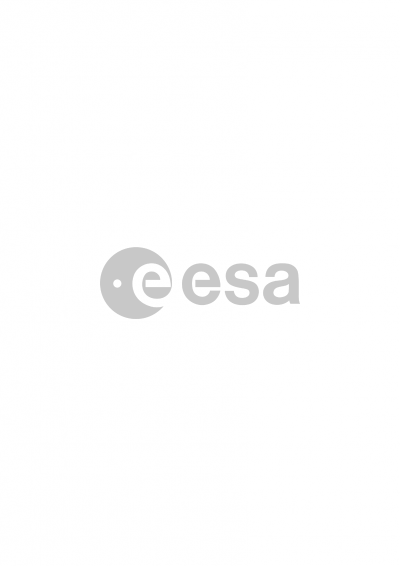Document details

Abstract
Yebes Observatory (OY) has been working for years on the construction of a Fundamental Geodetic Station that fulfils the requirements of the GGOS project. Currently, the Observatory host a RAEGE/VGOS radio telescope in operation since 2016, GNSS receivers, a gravimetry laboratory (with absolute and relative superconducting gravimeters), time and frequency systems and a local tie network.
At the beginning of 2018, funds for the construction of a Laser Ranging station at Yebes, coming from the European Regional Development Fund (ERDF), were approved. Including this technique, OY will become a GGOS Core Site.
The main objective of YLARA station is to perform geodetic observations contributing to the ILRS (International Laser Ranging Service) network, but a second application is under implementation. The station will be equipped with a dedicated laser system for space debris observations.
The design of the system is based on the SLR (Satellite Laser Ranging) stations classic design including a biaxial telescope with a Coudé focus and a conditioned room fully prepared for laser systems installation. However, the design also complies with the state of art of the SLR technique and the operation of the station for SLR observations is done using a laser package installed in a piggy back configuration. The system uses a two-color laser, 532 nm and 1064 nm, with a repetition rate of 1 kHz. The detector package, with a C-SPAD and an IR-SPAD detector, is also installed on the telescope mount.
Regular observations started last April in order to overcome the ILRS quarantine and become part of the network as an active station, getting the approval last October.
Related to the space debris observation capabilities, the laser system will be installed in the Coudé room on an optical bench. This laser has a pulse energy 1.000 times higher than the laser used for collaborative objects. It has a repetition rate of 200 Hz, a pulse width of 5-8 ns and it will be able to perform two-color observations (532 nm and 1064 nm) as in SLR observations.
The laser and all the optical elements needed for its operation are currently being installed and integrated at both, HW and SW levels, with the goal of having the system operational by March 2025.
Preview
